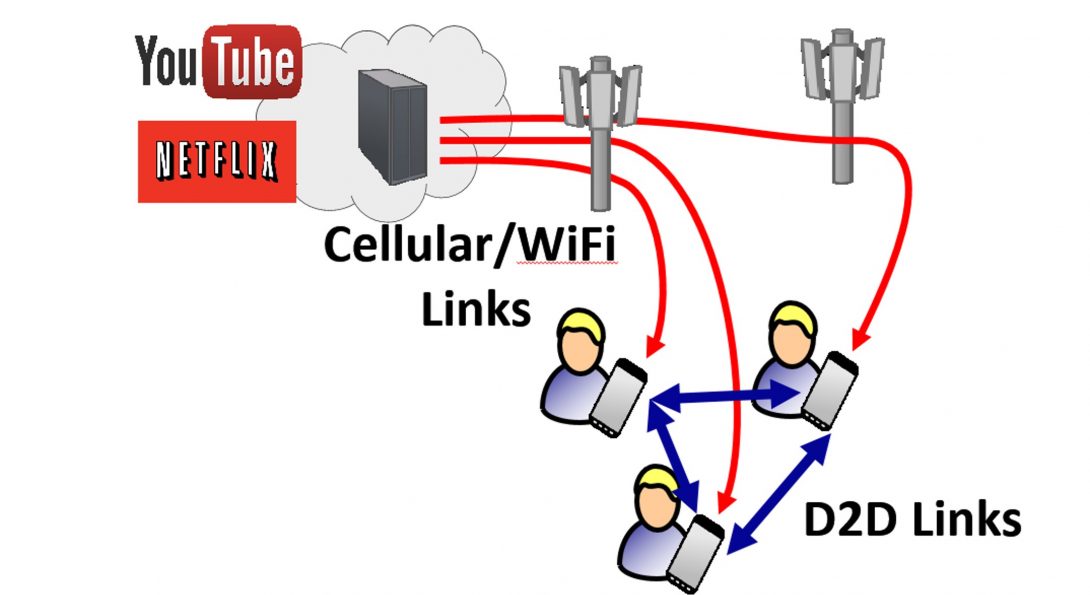When Bandwidth is not the Primary Bottleneck in Wireless Networks

“Bandwidth is traditionally considered as the primary scarce resource in wireless networks. Yet, thanks to close proximity among devices and the developments in communication theory, the main bottleneck shifts from bandwidth to other scarce resources including computing power, energy, cellular downlink and uplink rates, memory. In this context, I am interested in developing new applications, algorithms, and protocols in wireless networks when bandwidth is not the primary bottleneck.” -Yuxuan Xing
1
Problem Statement and Motivation
- Bandwidth is traditionally considered as the primary scarce resource in wireless networks.
- Yet, thanks to close proximity among devices (in D2D networks) and the developments in communication theory, the main bottleneck shifts from bandwidth to other scarce resources including computing power, energy, cellular downlink and uplink rates, memory, etc.
- Question: How to develop new applications, algorithms, and protocols in wireless networks when bandwidth is not the primary bottleneck?
Technical Approach
- Algorithm design using stochastic network control.
- Stability and optimality analysis of our algorithms.
- Prototype implementation of our algorithms using real mobile devices (Android operating system based smartphones and tablets), which provide us with valuable real-world feedback and an opportunity to fine-tune our algorithms.
Key Achievements and Future Goals
- A. Singh, Y. Xing, and H. Seferoglu, “Energy-aware cooperative computation in mobile devices,” in Proc. of IEEE IFIPNetworking Conference, Vienna, Austria, May 2016.
- H. Seferoglu and Y. Xing, “Device-centric cooperation in mobile networks,” in Proc. of IEEE CloudNet, Luxembourg, Oct. 2014.
- Future goals:
- Develop routing and scheduling mechanisms for wireless networks when bandwidth is not bottleneck.

